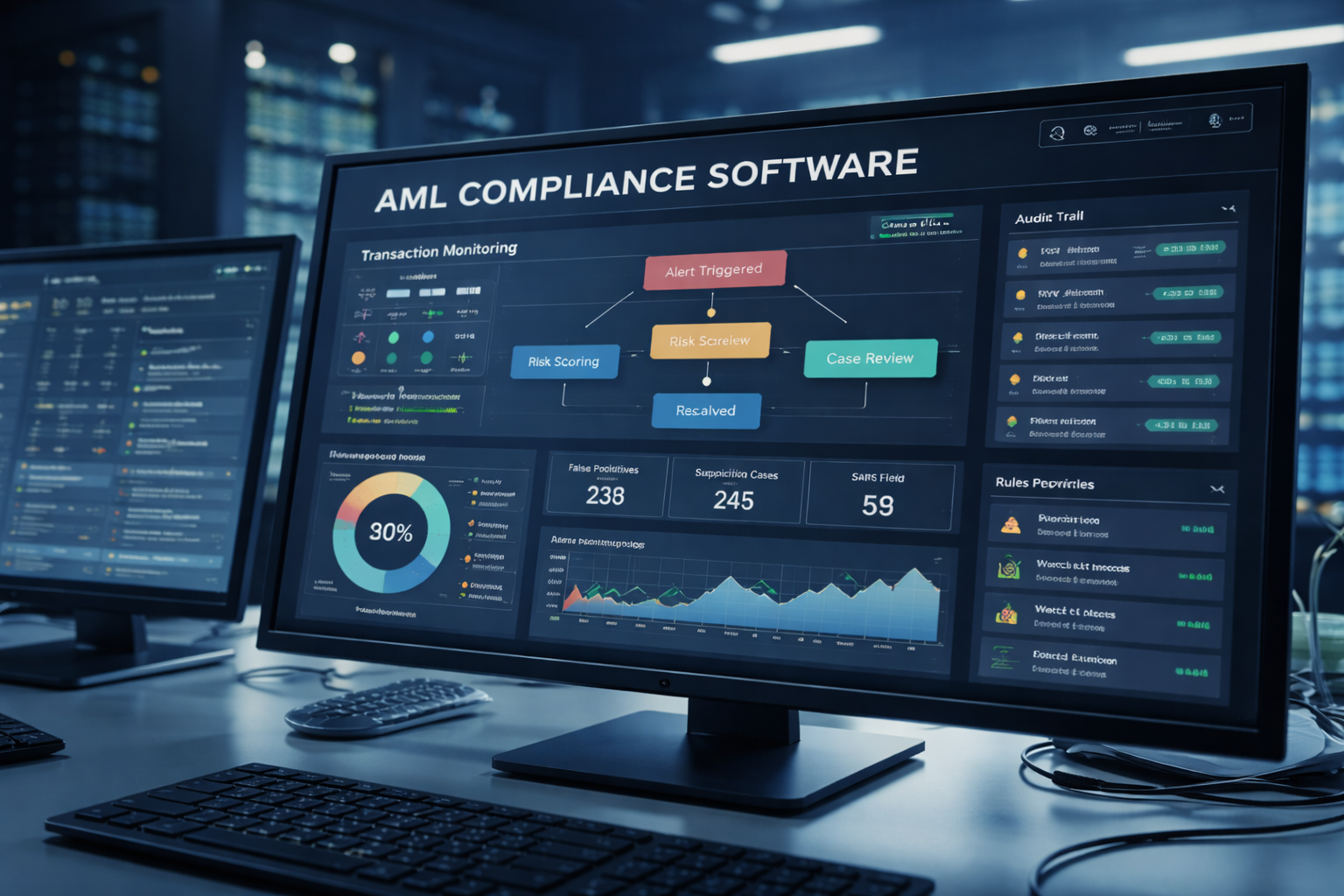The Crackdown on Shell Companies and the Role of Technology
.svg)
The Anti-Money Laundering Act (AMLA) 2020, enacted as part of the National Defense Authorization Act (NDAA) 2021 of the US in January this year, had many key provisions to take the Anti-Money Laundering/Countering the Financing of Terrorism (AML/CFT) regime in the country to the next level. The disclosure of Ultimate Beneficial Ownership (UBO), targeted to curb shell companies, is one among them and is widely regarded as a game-changer in the country’s fight against financial crimes. The new law comes at a time when the US remains one of the easiest places to set up an anonymous shell company, according to research from the University of Texas and Brigham Young University in Australia.
The situation is no different in many countries where people can create untraceable shell companies that are used to give and receive bribes, launder money, evade taxes and circumvent sanctions easily by spending a few hundred dollars. In fact, many jurisdictions have acted to address the problem and the world is awaiting good results. Here, we look to dive deep into the problem of shell companies, notable actions against them and the ways in which technology can help.
What are Shell Companies?
The US Securities Act defines a shell company as “a company, other than an asset-backed issuer, with no or nominal operations; and either: 1) no or nominal assets/assets consisting of cash and cash equivalents; or 2) assets consisting of any amount of cash and cash equivalents and nominal other assets." Shell companies are created for the purpose of diverting money or for money laundering. Some notable characteristics of most shell companies are:
- They conduct almost no economic activity. They do not manufacture goods or render any service.
- They are primarily used to make transactions, acting only in a pass-through capacity and facilitating cross border currency and asset transfer.
- Their banking transactions often do not have any economic rationale. They tend to make high-value transactions that are in no connection with the operations of the business.
- They have assets only on paper and not in real terms.
- They do not have any or insignificant physical existence at their registered addresses.
The ‘Real’ Intentions Behind Shell Companies
The following are the major reasons why people create shell companies. They are often interlinked with one another.
- Evading taxes: Shell companies are created by corporations at offshore locations, often called tax havens, where taxes are less, to park assets to evade high taxes within their home country.
- Laundering money: Shell companies are often used to store black money or ill-gotten money or channels to obscure the origin of such money.
- Hiding money off Ponzi Schemes: Criminals may create shell companies to divert money earned from Ponzi schemes. When the fraud is found, the real culprits are not identified, and the law enforcement agencies have only shell companies before them to put the blame on.
- Hiding identities of actual owners: In most cases, the real owner/owners of an offshore shell company cannot be located as the registered addresses of the directors is completely different from the address submitted to the registrar.
Notable Governmental Actions against Shell Companies (Other than the US)
In a survey conducted by think tank Transparency International, only seven out of the 47 countries have central beneficial ownership registers which are publicly available with no restrictions, while 17 countries have no central register at all including key economies like Australia, Canada and the US (at the time of the survey). Here are some of the notable actions taken by various governments with regard to beneficial ownership information.
- India: On 14th September 2020, India’s Ministry of Corporate Affairs (MCA) and Central Board of Direct Taxes (CBDT) signed a Memorandum of Understanding (MoU) to facilitate the sharing of data and information with each other on an automatic and regular basis “to curb the menace of shell companies, money laundering and black money in the country and prevent misuse of corporate structure by shell companies for various illegal purposes."
- UK: The UK launched its beneficial ownership register as the Persons with significant control (PSC) Register in April 2016. In January 2021, the UK government announced that all inhabited UK Overseas Territories, including the Cayman Islands and the British Virgin Islands, committed to adopting publicly accessible registers of company beneficial ownership.
- Europe: The Fourth Anti-Money Laundering Directive (4AMLD) mandated member states to introduce beneficial ownership registers that may be accessible to persons with a legitimate interest by 2017. Further, the Fifth and Sixth Anti-Money Laundering Directives (5AMLD and 6AMLD) reiterated the block’s stance on registers and the extended timeline for member states that have yet to implement.
- Singapore: In June 2019, the Monetary Authority of Singapore released a framework to detect and mitigate the risk from misuse of Legal persons.
FATF Best Practices to Curb Shell Companies
In 2003, the Financial Action Task Force (FATF) became the first international agency to set global standards on beneficial ownership reporting requirements. It mandated countries to ensure that their authorities could obtain up-to-date and accurate information about the person/persons behind companies and foundations and other legal persons. Later in 2012, 2014 and 2019, the FATF strengthened and clarified its beneficial ownership requirements further.
The following are the best practices suggested by FATF in its paper published in October 2019.
- Use of one or more mechanisms (the Registry Approach, the Company Approach and the Existing Information Approach) to ensure that information on the beneficial ownership of a company is obtained by that company and available at a specified location in their country; or can be otherwise determined in a timely manner by a competent authority
- A multi-pronged approach using several sources of information is often more effective in preventing the misuse of legal persons for criminal purposes and implementing measures that make the beneficial ownership of legal persons sufficiently transparent.
- Increased sharing of relevant information and transaction records would benefit global efforts to improve the transparency of beneficial ownership.
- Build an effective system with key features such as:
- Risk assessment
- Adequacy, accuracy and timeliness of information in beneficial ownership
- Access by competent authorities
- Forbidding or immobilising bearer shares and nominee arrangements
- Effective, proportionate and dissuasive sanctions
Implementation Risks and Red Flags for Financial Institutions
While the above recommendations would help government agencies to curtail the growth of shell companies, their implementation is a challenging task for countries. According to FATF, the common challenges in implementing beneficial ownership measures are:
- Inadequate risk assessment of possible misuse of legal persons
- Inadequate measures to ensure information is accurate and up to date
- Inadequate mechanisms to ensure competent authorities had timely access to information
- Lack of effective sanctions on companies that fail to provide accurate information
- Inadequate mechanisms for monitoring the quality of assistance received from other countries
From the perspective of financial institutions, with which shell companies open their accounts and conduct transactions, what is important is to have a modern solution that can identify red flags related to shell companies and accurately alert staff on the same. Some common red flags are:
- The disproportionately high velocity of transactions
- The complexity of financial transactions
- Unusual patterns in dealings (eg. transfer of financial assets to a new company that has no liabilities or wire transactions and activity history that do not match the company profile)
- High-risk or sanctioned regimes country of registration or operation
- Adverse media about the shell company or its directors
- Any director on watchlists
- Involvement with agents or more firms of similar nature
- Connection with high-risk customers
- Transactions with entities sharing the same address of the shell company
- Variety of beneficiaries receiving wire transfers
How Modern Technology Can Help Identify Shell Companies
In most instances, shell companies cannot be identified manually. However, with active use of modern technology and automation, financial institutions can track and monitor these firms, conduct investigations and report suspicious activities to the regulators. Here are some of the techniques financial institutions can use to ensure compliance.
- Customer Risk Assessment: At the time of onboarding, financial institutions need to assess multiple risk factors such as negative jurisdictions, the same registered address with different owners and inclusion in watchlists. A system should be in place to provide a single holistic overview of customer risk, removing the need to consult multiple sources of profile. Each customer should have a risk score based on the initial assessment. Significant risk profile changes need to be captured dynamically throughout the customer lifecycle.
- Transaction Monitoring: The transactions of the company should be compared with customer activity assessed at the time of onboarding with the help of modern tools. Transaction analysis tools should provide alerts in case of deviations in actual transactions from anticipated customer activity.
- Screening: Shell companies and their owners should be constantly screened against PEP lists, sanctions lists and adverse media among others.
Modern technologies such as machine learning and Big Data analytics can be effective tools for financial institutions to help identify shell companies and prevent their illegal activities. Specifically, modern solutions equipped with network analysis, deep learning, anomaly detection, natural language processing can assist compliance staff get superior results in their hunt for shell companies.
Tookitaki’s end-to-end AML operating system, the Anti-Money Laundering Suite (AMLS), powered by AML Federated Knowledge Base is intended to identify hard-to-detect money laundering techniques including shell companies. Available as a modular service across the three pillars of AML activity – Transaction Monitoring, AML Screening for names, payments and transactions and Customer Risk Scoring – the AI-powered solution has the following features to aid in the detection of shell companies.
- AI-powered detection of interactions and network relationships between customers or interested parties to flag suspicious activity
- World’s biggest repository of AML typologies providing real-world AML red flags to keep our underlying machine learning detection model updated with the latest money laundering techniques across the globe.
- Advanced data analytics and dynamic segmentation to detect unusual patterns in transactions
- Risk scoring based on matching with watchlist databases or adverse media
- Visibility on customer linkages and related scores to provide a 360-degree network overview
- Constantly updating risk scoring which learns from incremental data changes
Learn More: Compliance Challenges for Payment Companies
Our solution has been proven to be highly accurate in identifying high-risk customers and transactions. For more details of our AMLS solution and its ability to identify shell companies among other money laundering techniques, please contact us.
Experience the most intelligent AML and fraud prevention platform
Experience the most intelligent AML and fraud prevention platform
Experience the most intelligent AML and fraud prevention platform
Top AML Scenarios in ASEAN

The Role of AML Software in Compliance









